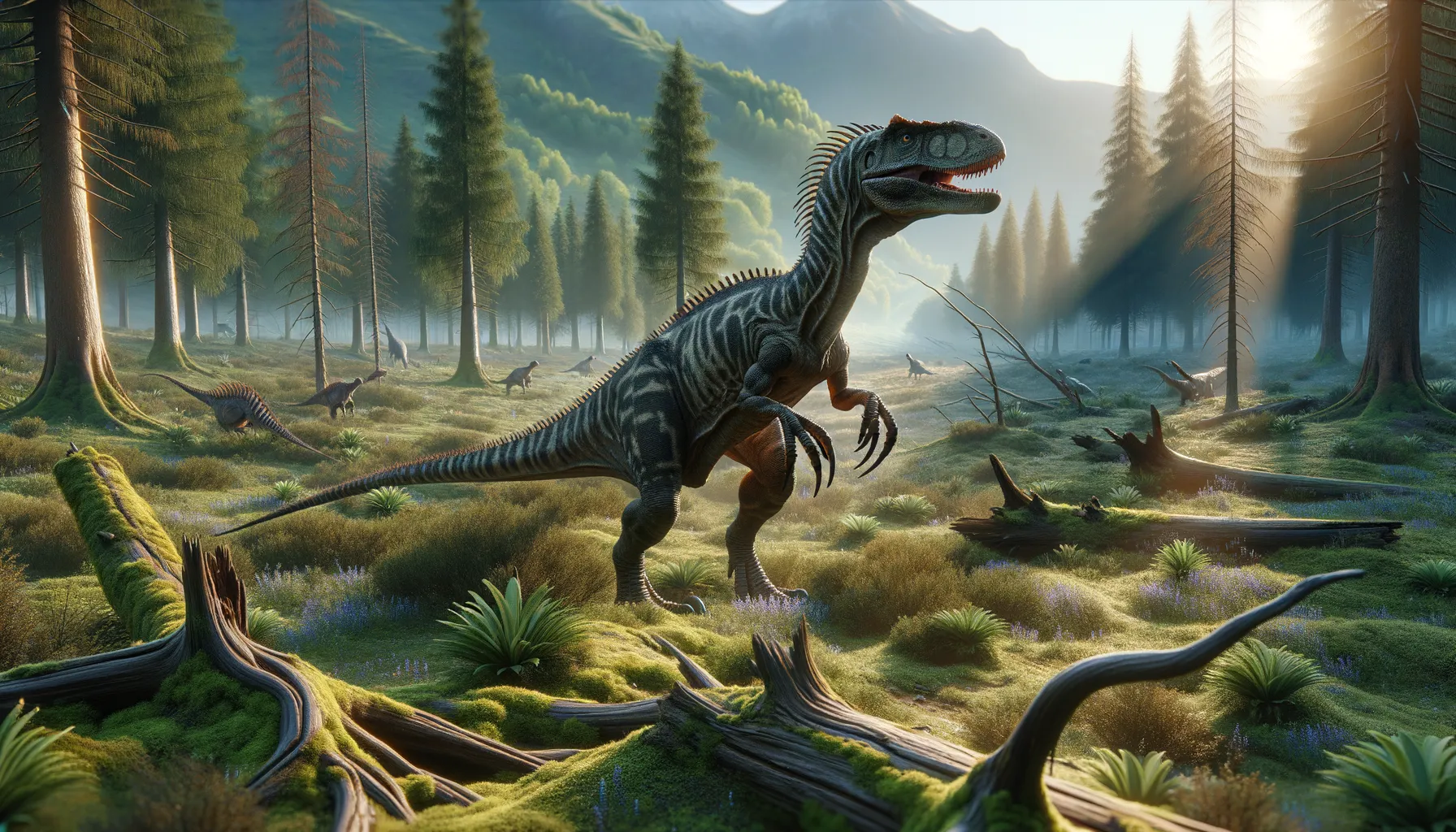
Balaur
A double-clawed predator from ancient Romania.
Period
Cretaceous
Length
Around 1.8 to 2.1 meters long.
Height
Roughly 0.6 to 0.9 meters tall.
Weight
Approximately 25 to 35 kilograms.
Balaur was a dinosaur that lived during the late Cretaceous period, primarily in what is today Romania. Known for its unique physical adaptations, Balaur was a relatively small dinosaur with intriguing features. It possessed double claws on each foot, which aided in its predatory behavior. Its environment was likely a blend of woodland and open spaces, where it hunted smaller prey. The discovery of Balaur provides valuable insights into the diversity of dinosaur species in Europe.
Diet
Balaur was a carnivore, most likely pursuing small to medium-sized prey. Its sharp claws and agile body suggest it could effectively capture fast-moving animals in its environment.
Hunting
The dinosaur relied on its speed and double claws to capture prey. Balaur's hunting behavior was likely solitary, stalking its prey before striking with precision.
Environmental challenges
Balaur lived in a dynamic environment that underwent seasonal changes. This included fluctuations in food availability and varying climate conditions. It had to adapt to these changes to thrive. Predatory competition may have been a constant challenge, requiring efficient hunting strategies.
Speed
Moderate, agile with quick movements.
Lifespan
Around 10 to 20 years in the wild.
First discovery
Found in Romania, early 2000s.
Fun Facts
- Balaur was a dinosaur that lived about 70 million years ago during the Late Cretaceous period.
- Unlike most other carnivorous dinosaurs, Balaur had two claws on each foot that it could use to hunt its prey.
- The name 'Balaur bondoc' means 'stocky dragon' in Romanian, highlighting its robust build.
- Balaur was initially thought to be similar to the Velociraptor but later studies suggested it might have been more bird-like.
- Fossils of Balaur have been found in Romania, and it is considered one of the most fascinating European dinosaur discoveries.
- Balaur was relatively small in size, estimated to be around two meters long, making it about the size of a large dog.
- Some scientists believe that Balaur could have been an omnivore, eating both plants and small animals.
Growth and Development
Balaur likely experienced rapid growth early in life to quickly reach a size capable of defending itself. Its development included the strengthening of its unique double claws. These features would have become more pronounced as it matured. The growth patterns are inferred from fossil evidence reflecting bone structure.
Habitat
Balaur inhabited a mix of forested and open areas in prehistoric Romania. These habitats offered rich biodiversity, providing ample hunting grounds. Such environments also facilitated its evolutionary adaptations. The landscape would have included river systems and varied vegetation.
Interaction with other species
Balaur may have competed with other carnivorous dinosaurs for resources. It likely shared its habitat with diverse plant-eating species, requiring careful navigation to minimize confrontations. Social interactions with other Balaur individuals are not well understood, but they could have been territorial.
Natural lifespan
Balaur's natural lifespan was likely limited by predation and environmental pressures.
Reproduction
Balaur might have reproduced through laying eggs, similar to other theropods. Nesting behavior would have varied based on environmental protection needs. The dinosaur likely selected safe locations to lay eggs, ensuring hatchling safety from predators.
Social behaviour
The social behavior of Balaur remains unclear, but it may have been a solitary hunter. Territorial instincts might have dominated, influencing its interactions. However, potential seasonal gatherings for mating can't be ruled out.
Fossil locations
Fossils of Balaur have been primarily found in Romania, specifically in the Haţeg Basin. These discoveries have provided vital insights into the diversity of Cretaceous fauna in Europe. The fossils indicate a region rich in dinosaur activity during its era.
